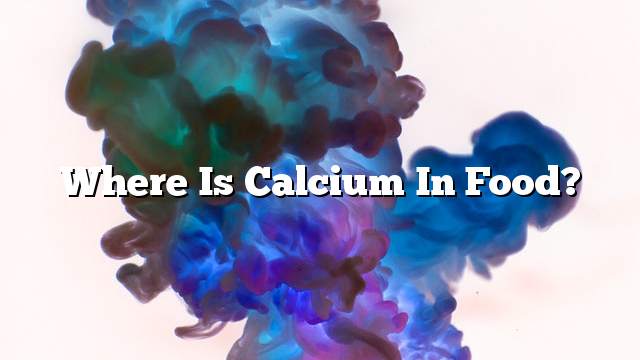Calcium
Calcium is one of the elements that can be obtained through a healthy diet by eating the foods that contain it. The sources of calcium are many and varied and lack in the body leads to the infection of several diseases, the most important is the most common is the osteoporosis experienced by many women Over the age of sixty, and due to the injury of women with this disease, especially those who gave birth so much that the fetus absorbs the benefits that are lacking in the mother’s bone, a woman must get one thousand and five hundred milligrams of calcium in the diet daily.
Age in itself affects human diseases associated with lack of calcium in the body such as memory loss, or forgetfulness, depression, and numbness of hands and feet. It is worth mentioning that taking calcium from dietary supplements in pharmacies in large quantities without medical supervision leads to an increase in Body which may become deadly.
Calcium absorption
There are factors that affect the absorption of calcium naturally entering the body through nutrition or take it as a supplement, including:
- Vitamin D: Increases body absorption of calcium when it comes to vitamin D, so fortified milk is one of the best sources of dietary calcium.
- Age: Calcium absorption in children is twice or twice that of adults.
- Foods eaten with dietary calcium sources: Lactose sugar and vitamin C strengthen body absorption of calcium, while diets high in fat and protein weaken it and increase body elimination.
- Food needs.
It is worth mentioning that calcium absorption of milk and milk products is higher than others, which amounts to 30% while up to (5%) in green leafy vegetables.
Calcium Sources
We have noted through what we read earlier that calcium is very necessary for our health so in this article we will show you how to get calcium through your daily diet.
- Dairy products and cheeses:
| Type of Dairy | Calcium content in every hundred grams |
|---|---|
| Whole milk | 115 milligrams |
| Low-fat milk | 118 milligrams |
| Milk skimmed | 120 milligrams |
| Milk | 190 milligrams |
| Chard Cheese | 270 milligrams |
- Pulses, nuts and grains:
| Food category | Quantity | Calcium content |
|---|---|---|
| Almonds | One quarter cup | 72 milligrams |
| Sesame | Tablespoon | 88 milligrams |
| Canned white beans | Glass | 191 milligrams |
| Whole wheat bread | One hundred grams | 54 milligrams |
| Oats | Glass | 187 milligrams |
| Type of fruit | Quantity | Calcium content |
|---|---|---|
| Dried figs | Eight beads | 107 milligrams |
| Orange | Medium grain | 72 milligrams |
| Orange juice | Glass | 500 milligrams |
- Green vegetables and plants:
| Type of vegetables | Calcium content in the cup |
|---|---|
| Salt | 95 milligrams |
| Poke Choi (Chinese cabbage) | 74 milligrams |
| Rough turnips | 197 milligrams |
- sea food: Each 100 grams of canned sardine contains 550 milligrams of calcium.
